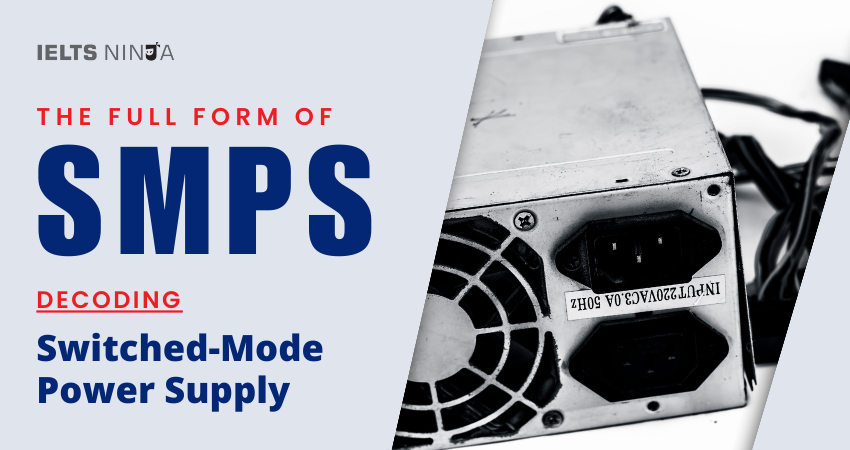In the realm of electronics and power systems, “SMPS” is a significant abbreviation. The full form of SMPS, which stands for Switched-Mode Power Supply, is an essential component used to convert electrical power efficiently from one form to another. In this comprehensive guide, we will explore the details of SMPS, its functions, and its significance in various electronic devices and applications.
What is SMPS?
“Switched-Mode Power Supply” (SMPS) is a type of electronic power supply that uses switching devices to convert electrical power efficiently from one voltage or current level to another. Unlike traditional linear power supplies that rely on transformers and are less energy-efficient, SMPS devices operate by rapidly switching components on and off to regulate the output voltage or current.
Key Features of SMPS
SMPS units have several key features:
- Efficiency: SMPS is known for its high efficiency in converting electrical power, resulting in less heat generation and energy wastage.
- Compact Size: SMPS devices are typically smaller and lighter than traditional linear power supplies, making them ideal for space-constrained applications.
- Wide Input Voltage Range: SMPS units can often operate over a wide input voltage range, making them suitable for various power sources.
- Regulated Output: SMPS provides a stable and regulated output voltage or current, ensuring consistent performance for connected devices.
- Switching Frequency: These devices operate at high switching frequencies, reducing the size of components and minimizing electromagnetic interference.
How SMPS Works
The operation of an SMPS can be summarized in the following steps:
- Rectification: AC input voltage is converted to DC through a rectifier.
- Filtering: The DC voltage is smoothed and filtered to reduce ripple and noise.
- Switching: High-frequency switches (typically transistors or MOSFETs) rapidly turn on and off, modulating the DC voltage.
- Transformation: The modulated voltage is fed into a transformer, which steps it up or down as needed.
- Rectification (Again): The transformer’s output is rectified back to DC.
- Output Regulation: The output is further filtered and regulated to provide a stable voltage or current.
- Load Connection: The regulated output is then connected to the load (the electronic device being powered).
Applications of SMPS
Switched-Mode Power Supplies are widely used in various applications, including:
- Consumer Electronics: SMPS units power devices such as laptops, smartphones, and LED TVs.
- Industrial Equipment: They are used in industrial automation, CNC machines, and robotics.
- Computers: Desktop computers and servers often use SMPS for their power needs.
- Telecommunications: SMPS is employed in telecommunications infrastructure and networking equipment.
- Medical Devices: Many medical devices, including imaging equipment and monitoring devices, rely on SMPS for power.
- Renewable Energy: Solar inverters and wind turbine systems use SMPS for energy conversion.
Also Read: Best online IELTS coaching & training academy
Advantages of SMPS
SMPS offers several advantages over traditional linear power supplies:
- Higher Efficiency: SMPS units are significantly more energy-efficient, resulting in lower power consumption and reduced operating costs.
- Compact Size: Their smaller size makes them suitable for portable devices and space-constrained applications.
- Wider Input Range: SMPS can often handle a broader range of input voltages, making them versatile.
- Less Heat Generation: Due to their efficiency, SMPS devices generate less heat during operation.
Conclusion
Switched-Mode Power Supply (SMPS) is a fundamental component in modern electronics and power systems. Its ability to efficiently convert electrical power, its compact size, and its versatility have made it a cornerstone of various electronic devices and applications, from consumer electronics to industrial equipment and renewable energy systems.
As technology continues to advance, SMPS technology plays a crucial role in reducing energy consumption, improving power efficiency, and enhancing the performance and reliability of electronic devices and systems.








